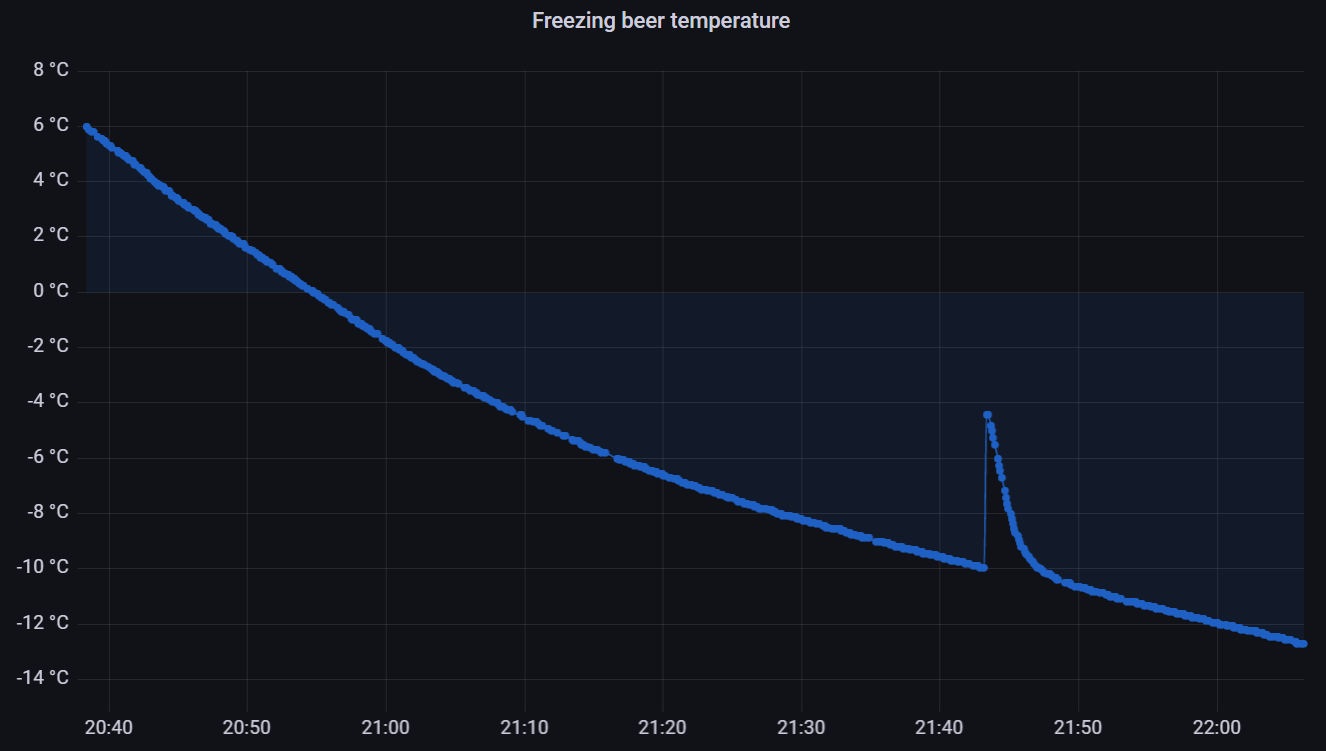I left an open beer in the freezer while monitoring its temperature. The first minutes works as expected. But after the plateau, at about −8 °C, a peak appeared:
I thought it was an artefact because the can was open and the sensor was inside.
So I repeated the experiment with an intact, closed can.
The same spike occurs slightly below −10 °C. Well into the superfreezing phase, which is much wider this time.
Since beer is a liquid solution, I think this must be some component that changes phase before the others. Or maybe something related with solubility of $\ce{CO2}$ or ethanol as temperature changes.
Do you know what it is due to?
Update: reproducibility
After defrosting the can and putting it back in the freezer, the peak appeared again. Same result.
In order to discard a sensor issue, this is the freezing curve of the sensor itself:
Curve of full freezing process:






